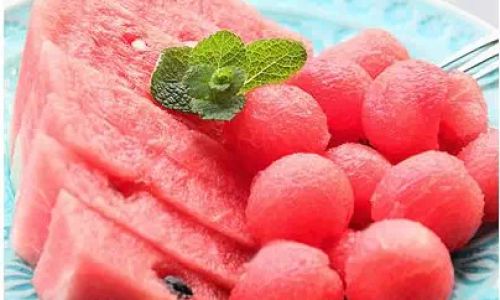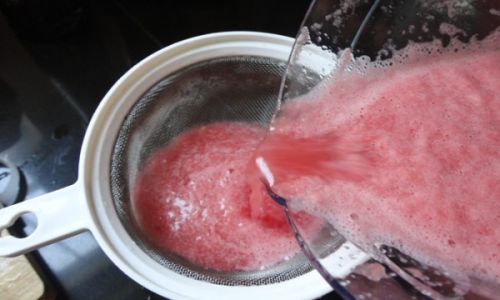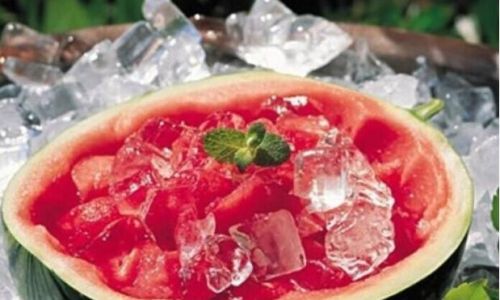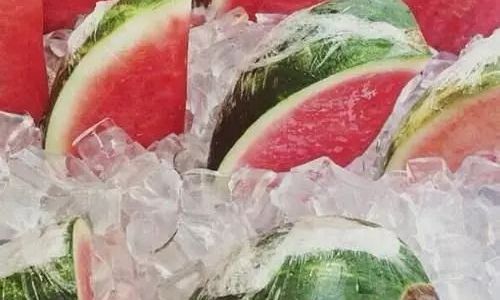Summer days call for cooling treats, and few things rival the sheer joy of biting into a slice of perfectly chilled watermelon. Bursting with natural sweetness, hydrating juice, and a crisp texture, this iconic fruit is a staple at picnics, barbecues, and lazy afternoon gatherings. While many people enjoy watermelon straight from the fridge, there’s an art to elevating its flavor and presentation. In this guide, we’ll explore the timeless appeal of chilled watermelon, share tips for selecting the ripest fruit, and walk you through simple yet creative preparation methods to transform this humble fruit into a showstopping dish. Whether you’re hosting a party or craving a solo indulgence, these techniques will help you master the ultimate chilled watermelon experience.

Why Chilled Watermelon Reigns Supreme in Summer
Watermelon (Citrullus lanatus) is more than just a thirst-quenching snack—it’s a nutritional powerhouse. With 92% water content, it’s nature’s answer to hydration, making it ideal for hot days. But its benefits extend beyond hydration: it’s packed with vitamins A and C, antioxidants like lycopene, and amino acids that may aid muscle recovery. When chilled, these qualities are enhanced, creating a crisp, invigorating bite that cools the body and satisfies the soul.
Chilling watermelon isn’t merely about temperature; it’s about enhancing the fruit’s natural flavors. Cold temperatures mellow the fruit’s subtle earthy undertones, allowing its sweetness to shine. The process also firms up the flesh, creating a satisfying contrast between the crisp rind and juicy center. Whether served in wedges, cubes, or as part of a creative dish, chilled watermelon is a versatile crowd-pleaser.
Selecting the Perfect Watermelon
The foundation of a great chilled watermelon dish starts with selecting the right fruit. Here’s how to pick a winner:

- Field Spot Check: Look for a creamy-yellow or orange “field spot” on one side of the watermelon. This indicates the fruit ripened on the vine, as opposed to being picked prematurely. Avoid melons with a white or pale spot.
- Weight Test: A ripe watermelon should feel heavy for its size. This density suggests it’s packed with juice and less airy, which often correlates with sweetness.
- Thump It: Gently tap the watermelon. A hollow, deep sound (like a drum) indicates ripeness, while a dull thud means it’s underripe or overripe.
- Uniform Shape: While odd bumps are normal, avoid watermelons with flat sides or irregular lumps, which may signal inconsistent growing conditions.
Preparation: From Rind to Refinement
Once you’ve brought your prize home, it’s time to prepare it for chilling. Follow these steps for optimal results:
Cleaning the Melon
Rinse the watermelon under cool water, scrubbing gently with a vegetable brush to remove dirt or residue. This step prevents contaminants from transferring to the flesh during slicing.
Slicing Techniques
The way you cut your watermelon affects both presentation and eating experience. Here are three popular methods:

- Classic Wedges: Cut the watermelon in half lengthwise, then slice each half into 1-inch thick wedges. This is perfect for casual snacking.
- Cubes or Sticks: Slice the watermelon into rounds, then cut into bite-sized cubes or sticks. Ideal for salads, skewers, or fruit platters.
- Melon Balls: Use a melon baller to create elegant spheres. This method adds a touch of elegance to desserts or cocktails.
Removing Seeds (If Needed)
While seedless varieties are convenient, traditional watermelons have black seeds. To remove them, slice the fruit into manageable sections and scrape the seeds out with a spoon or knife.
Chilling Methods: Refrigeration vs. Ice Bath
Chilling watermelon intensifies its flavor, but the method you choose impacts texture and timing. Here’s a breakdown:
Refrigeration
- How: Place sliced watermelon in an airtight container or wrap tightly in plastic wrap. Store in the refrigerator for 2–4 hours.
- Pros: Maintains the fruit’s natural crispness; ideal for meal prep.
- Cons: Takes longer than ice baths.
Ice Bath
- How: Fill a large bowl with ice water and submerge watermelon slices for 30–45 minutes.
- Pros: Rapid chilling; adds a refreshing “crisp” to the flesh.
- Cons: May dilute flavor slightly if left too long.
Flavor Enhancements: Beyond the Basic Slice
While plain chilled watermelon is divine, these additions take it to the next level:

- Herb Infusions: Toss cubes with fresh mint, basil, or cilantro. The herbs’ aromatic oils complement the fruit’s sweetness.
- Citrus Zing: Squeeze lime or lemon juice over slices, or add a sprinkle of lime zest for a tangy kick.
- Salty-Sweet Balance: A pinch of flaky sea salt (like Maldon) or Tajín seasoning (a chili-lime blend) enhances the watermelon’s natural sugars.
- Honey Drizzle: Lightly brush honey or agave syrup over cubes for a caramelized flavor.
Creative Serving Ideas
Chilled watermelon isn’t just for eating plain—it’s a star ingredient in countless dishes:
- Watermelon Salad: Combine cubes with feta cheese, cucumber, and red onion. Dress with balsamic glaze and olive oil.
- Frozen Treats: Blend chilled watermelon into a slushie, or freeze cubes on skewers for DIY popsicles.
- Cocktail Mixer: Muddle watermelon with tequila, lime, and triple sec for a refreshing margarita.
- Savory Appetizer: Wrap watermelon cubes in prosciutto and secure with a toothpick.
Storage Tips for Freshness
Leftover chilled watermelon? Follow these guidelines to keep it crisp:
- Avoid Condensation: Drain excess juice before storing to prevent sogginess.
- Airtight Containers: Use sealed containers to lock in moisture and prevent odor absorption.
- Freeze for Later: Spread cubes on a baking sheet, freeze until solid, then transfer to a freezer bag. Use within 3 months for smoothies or sauces.
Health Benefits of Watermelon
Beyond its delicious taste, watermelon offers a host of health perks:

- Hydration: With 92% water, it’s a natural electrolyte booster.
- Vitamin Boost: Rich in vitamins A (for eye health) and C (immune support).
- Heart Health: Lycopene, the pigment responsible for its red hue, may reduce heart disease risk.
- Low in Calories: A cup of watermelon has just 46 calories, making it diet-friendly.
Troubleshooting Common Issues
- Mushy Texture: Overripe watermelon or prolonged chilling can cause mushiness. Stick to 2–4 hours in the fridge.
- Bland Flavor: If your watermelon lacks sweetness, add a pinch of salt or a drizzle of honey.
- Mealy Texture: This indicates overripeness. Stick to melons with firm, smooth rinds.
Conclusion: Savor the Simplicity
Chilled watermelon is a testament to the beauty of simplicity. With minimal effort, you can transform a humble fruit into a refreshing masterpiece. Whether you’re hosting a backyard bash or seeking a quiet moment of respite, this timeless treat delivers. Experiment with flavor pairings, presentation styles, and serving methods to make it your own. After all, summer’s greatest pleasures often lie in the simplest joys—and a chilled watermelon slice is no exception.
So, the next time temperatures rise, head to your kitchen, grab a knife, and let the magic of chilled watermelon take center stage. Your taste buds (and guests) will thank you.






0 comments